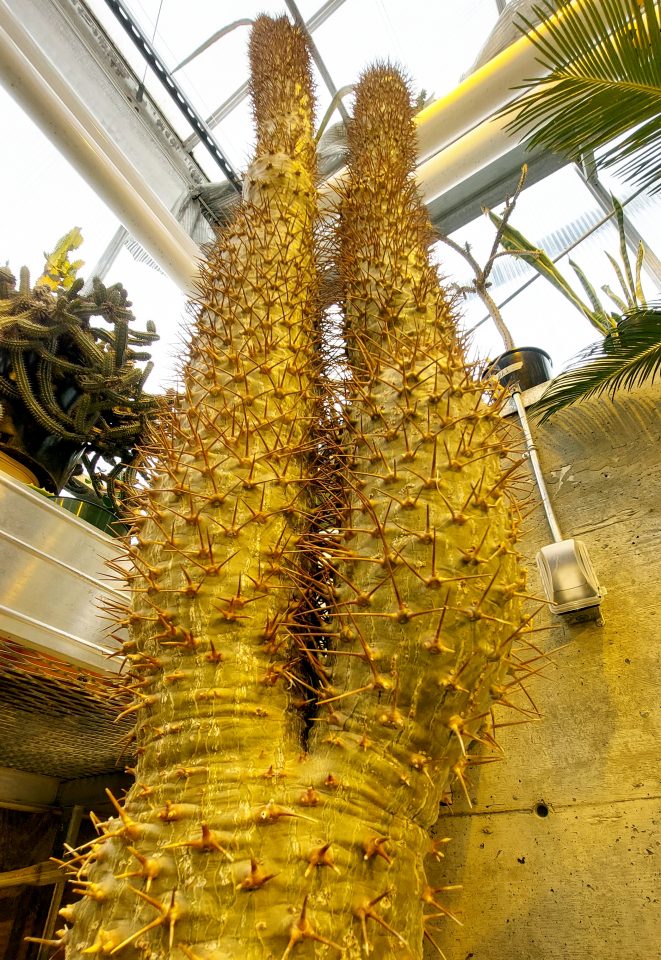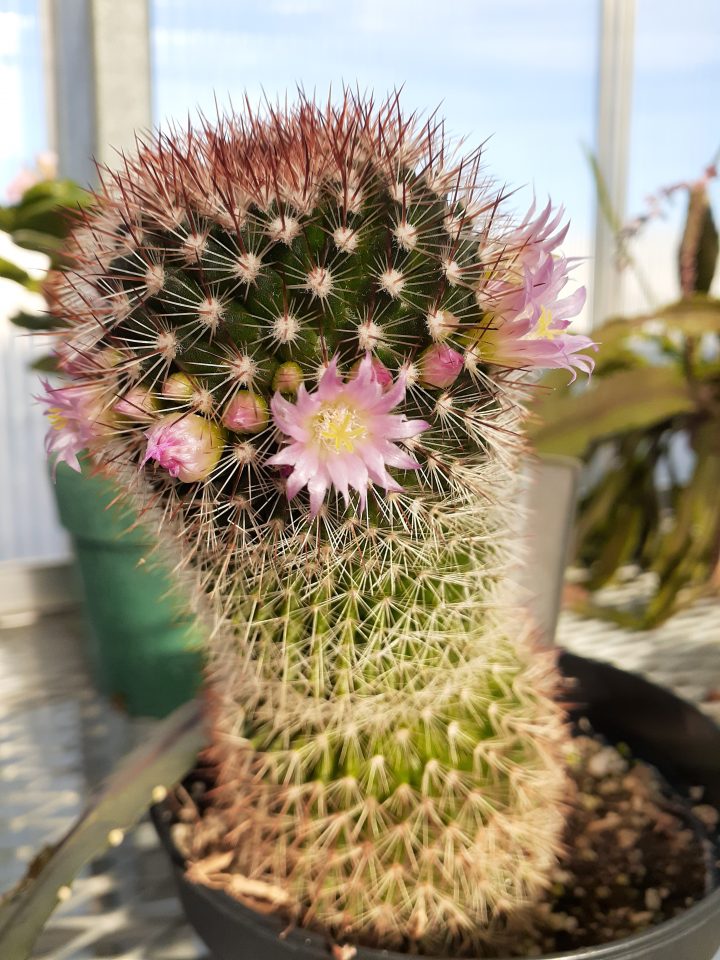
The cacti and succulents are susceptible to overwatering stress and root rot. Growing media for these plants should have a higher proportion of perlite and sand and the plants generally prefer more alkaline conditions. For most of these plants, do not water until the potting media has dried thoroughly after the last watering. Many of these plants are able to store large amounts of water in their stems and leaves – make note of how thick the stems are and how stiff the leaves are, as shrinking stems and limp leaves are signs of water stress in these plants.
The leaves of the Aloes and Agaves should be firm, stiff, and pointing upwards – not drooping or wrinkled. If they show these signs, the plants should be watered thoroughly (until water drains from bottom of pot).
The barrel type cacti grow very slowly and generally should not change shape. If the ridges in their body become more pronounced (the stem shrinks inwards), it is a sign that they need a thorough watering.
The Ephedras are the least drought tolerant of the group. They need regular watering and do not show much change before dying from water stress – they can present as slightly greyer than usual when drying out, but this is usually too late to save them. Water when the top of the soil is dry, or at least once per week.
The Crassulas grow best when they are kept dry. Water just before the leaves begin to show signs of desiccation – this may be after the soil has been dry for a time. They are very prone to mealybugs, which can deform their new leaves – monitor this closely and use Cryptolaemus (beneficial lady beetle) or alcohol swabs to remove.
The cacti and succulent collection includes the following species:
| • Agave angustifolia var. marginata | • Agave fourcroydes |
| • Agave toumeyana var. bella | • Alluaudia procera |
| • Aloe arborescens | • Aloe vera |
| • Bryophyllum daigremontianum | • Cotyledon tomentosa |
| • Crassula arborescens | • Crassula ovata |
| • Echinocactus grusonii | • Echinopsis pachanoi |
| • Ephedra nevadensis | • Ephedra sinica |
| • Ephedra viridis | • Euphorbia milii |
| • Euphorbia tirucali | • Gymnocalycium baldianum |
| • Haworthia retusa | • Mammillaria sp. |
| • Mammillaria spinosissima | • Opuntia microdasys |
| • Opuntia sp. ‘Snow’ | • Sansevieria trifasciata |
| • Simmondsia chinensis |




